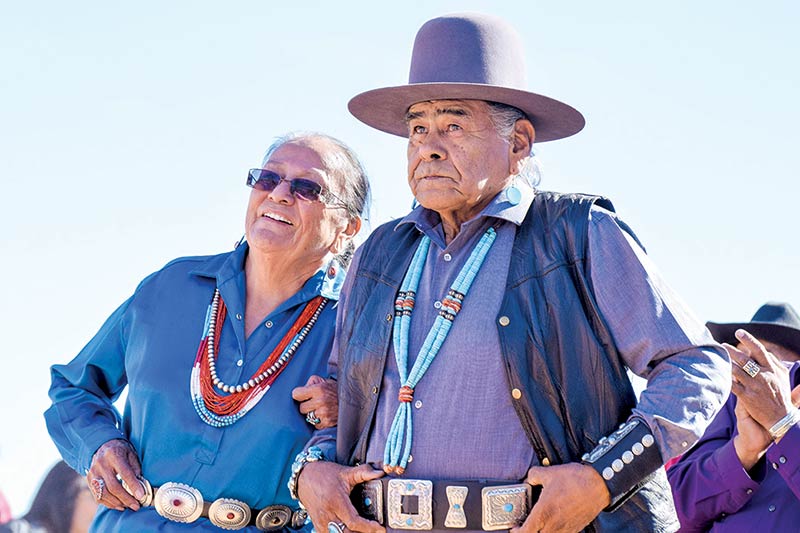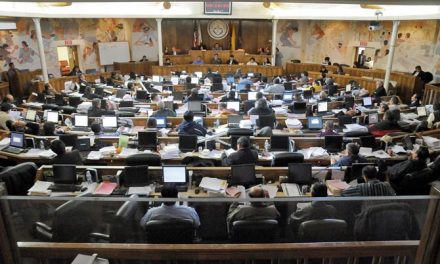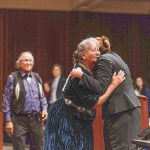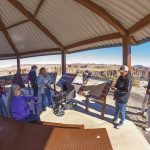
Clothes tell a story

Navajo Times | Krista Allen Former Miss Western Navajo Elderly Ruby Greenstone from Shonto, Arizona, and Alex Begay from Waterflow, New Mexico, wait to dance in a round of two-step during the Elder Fest at the 28th annual Utah Navajo Fair on Oct. 27 in Bluff, Utah.
Bold colors, eye-catching patterns at Utah fair Elder Fest
BLUFF, Utah
Even though the Diné traditional style is fading away, it stood out through bold colors, vintage or handmade items and eye-catching patterns at the Elder Fest during the 28th annual Utah Navajo Fair.
Louise Nez, 76, from Mariano Lake, New Mexico, says looking at what Diné men and women are wearing in each of the five agencies tells just as much about the state of things as the language does.
“Men and women in Western Navajo have a style dating back to the olden days,” Nez explained in Diné bizaad. “And men and women in Eastern Navajo wear contemporary clothing. Like the white man, they wear clothes they bought in stores such as pants, button-down shirts and sneakers.
“And even the Navajo language,” she added, “it’s spoken differently throughout the Navajo Nation. People in Eastern speak differently than people in Western.”
From tl’aakal (skirts) to deiji’éé’ (blouses) to dootl’izhii (turquoise) to kélchí (moccasins), the stylish fairgoers over the weekend proved that events like the Elder Fest only tell half the story.
“What I’m wearing, women wore in the olden days,” Nez said in Diné bizaad as she showed the yoo’nilchíní (sterling buttons) on her blouse and the yoo’?ichi’í (red coral necklace) around her neck. She showed her concho belt, the fleecy fabric and the scarf she wore, which calculated a display of wealth.
“Women in those days wore three- to four-tiered skirts,” she said. At that point in time, Nez says, women’s blouses were heavily embellished with yoo’nilchíní. “Nowadays, it’s all nickel,” she said.
“Nowadays some women’s clothing are immodest. That isn’t Diné traditional style.”
To read the full article, pick up your copy of the Navajo Times at your nearest newsstand Thursday mornings!
Are you a digital subscriber? Read the most recent three weeks of stories by logging in to your online account.








 Highway 264,
Highway 264, I-40, WB @ Winslow
I-40, WB @ Winslow